
Kanata no Astra is a twelve episode show produced by Studio Lerche (Classroom of the Elite, Given) that aired in summer 2019. It is an adaptation of the Shounen Jump+ manga that was written by Shinohara Kenta. The show is directed by Andou Masaomi (episode director - Vampire Knight, Fairy Tail), with the music composed by Yokoyama Masaru (Your Lie in April, Fruits Basket), and Nobusawa Nobuaki (Dagashi Kashi, Steins;Gate 0). Starring as the two leads, Kanata and Aries, are Hosoya Yoshimasa (Arslan Senki, Baby Steps), and Minase Inori (Danmachi, FLCL Progressive) respectively.

The show revolves around a group of students that are sent on an off-world field trip to an isolated planet as part of a team-building exercise. Once the teachers leave the students, an orb appears from nowhere and sucks the students into it, teleporting them into space and nearly killing them. The group is made up of nine students: Kanata, Quitterie, Aries, Yunhua, Charce, Ulgar, Luca, Zack, and Funicia. While they are out in space they find an abandoned spaceship called the Astra, which they commandeer and use so they would be able to return to their home.

When they are preparing for the journey, it dawns on them just how far away they actually are from home. They are in fact thousands of lightyears away from their home, and it turns out that they would need to stop at six different planets along the way so that they are able to restock every twenty or so days. Over the course of the next twelve episodes, we accompany these students as they make their way through space, exploring, scavenging, and growing closer as a group.
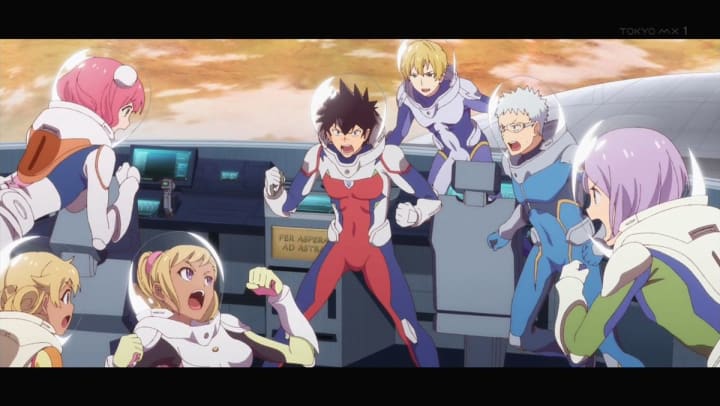
Something that I found quite interesting about the series is that, firstly, it actually has a conclusion to the story, and even more surprisingly, I found it to be very satisfying. It also starts and ends with a forty-minute long episode. The opening episode takes its time in setting up the characters, their personalities, and the predicament that they find themselves in while establishing the world that they inhabit. The closing episode manages to wrap up the story in an incredibly satisfying manner, managing to answer all the questions that were left in an orderly manner.

A quick explanation as to what Cinematic ratio is. If we are to take the examples of a cinema screen and a television, you may often notice that when you watch films at home, there are times when there are two black bars at the very top and the very bottom of the screen. This is because theatrical films are formatted to fit a cinema screen, which is actually wider than the average consumer screens.
Here we are going to go to an even more technical explanation to the difference between the average cinema screen and an IMAX screen. If you look at films such as Guardians of the Galaxy Vol. 2, which is shot using a combination of IMAX cameras and regular cameras, at least regular in a large scale studio production, you might notice that the size of the screen changes from point to point, and the reason why is because IMAX cameras are incredibly powerful, collecting a lot of detail. As such the IMAX screens are at a resolution that is much closer to that of your household television, which is why you may find instances when a film shot in IMAX would not have the black bars at the top and at the bottom of the screen.
The reason why I went out of my way to explain this distinction as best as I could in as simple a manner that I could is because this shifting of the size of the screen is also present in Kanata no Astra. When this shift happens, unlike Guardians of the Galaxy Vol. 2, where it is quite seamless, it is quite noticeable here. Thankfully it is not to the point that it would actually take you out of the show. The worst offender of this is the previous Michael Bay Transformers where it changed the size of the screen as if it was trying to replicate the beat of a horse running.
Now then to the actual point; the reason why I mentioned all of this is because I wanted to say that the usage of this ratio made the show feel cinematic, and it was interesting to experience the show in such a manner as this is the first time I have experienced it in an anime. The high polish of the show made it feel as if it could be played in a cinema, and the ratio only helped in reinforcing this notion.

Continuing with the visuals of the show, it is an incredibly colourful show. The characters all have distinctive character models to them, and if they look similar, there are actual story reasons as to why that is the case. Not only are the characters unique in design, but the planets that we get to see throughout the show are also very different from each other. On a few of them I actually got shades of Interstellar, and The Chronicles of Riddick. This is one of the few shows in a while that legitimately felt like an adventure, and this visual variety definitely helped in this regard.

Even though this is a sci-fi show, much of it depends on the chemistry between the characters, as we spend a large portion of time with them simply talking. The show actually treats the journey home more like a road trip between friends, rather than a tense trek home with a constant fear for their lives. Granted, there are plenty of moments where things are tense, and the presence of danger is very real. However, I do find that the show having the tone of a road trip through the majority of it allowed me to get to know the characters better than I otherwise would have. In fact, to have the skill to switch up the tone of the show without breaking the integrity of the story is an impressive feat on it own.
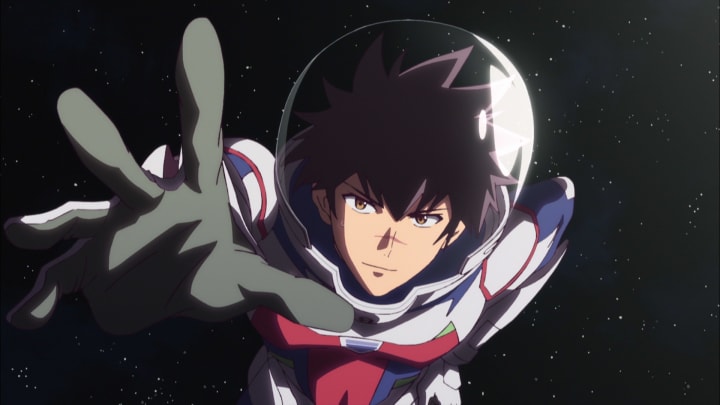
As far as the characters are concerned, they start as the typical anime characters that we are all very familiar with. We have the loud and exuberant one, the smart and emotionless one, the brooding one, the all-around nice guy with ulterior motives, the klutz, so on and so forth. That being said, as the show progresses, we get to know them. So much so that the stereotypes start to melt away with each episode. By the end of the show, because you have seen them work together, fight for each other, save each other, and gradually learn about each other, you feel as if you are a part of the crew, and when a character is threatening the bond between the crew it hits even harder.
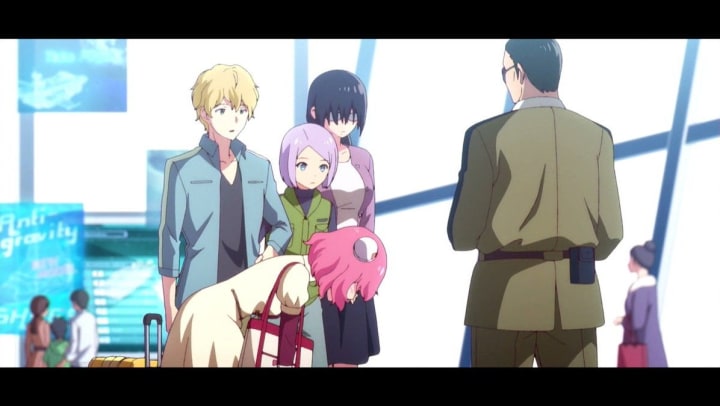
When watching the show, there is a lot of time that is devoted to character building and character progression. So much so that arguably the first third of the show is devoted to this before we start to unravel the greater mystery that is hiding beneath the surface of this lost in space narrative. There is so much story to unpack in this show, to the point that after each plot twist is revealed, the characters sit and talk for half an episode to figure out how it all fits into the story, which in turn reveals more about them as characters and the state of the world they live in. These plot twists are of such magnitude that at times I was forced to stand up, just so that I could sit down. I do not think the plot twists would have worked nearly as well if we were not given the development of the characters first, primarily because, when you have shared a certain amount of time with them and gotten to know them, you feel as if you are sharing the shock and surprise that the characters are feeling, which is impressive writing.
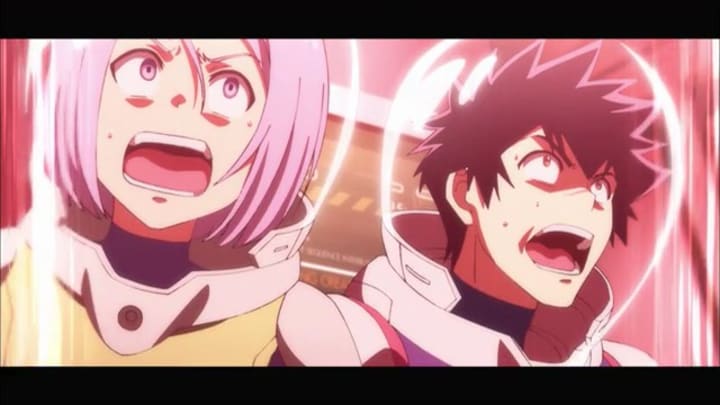
The music of the show fit as well as it should and did the job of a soundtrack. However, I must say that there were times when it reminded me of the soundtrack from Classroom of the Elite. Taking the opening and ending songs of the show out of the equation, it was largely unmemorable.

When it comes to whether I would go so far as to recommending the show or not, I am of two minds. While I did find the plot twists to be very exciting when they started to occur in increasing frequency, you do need to make your way through a few episodes of planting before you actually start to see the pay-offs. This could be a detractor to a lot of people, and it would be easy to brush the series to the side as a result of the stereotypical characters that start the show off. The opening episode is forty minutes long, and while there is excitement, there is a lot of set-up, to the point that it borderline feels like the first episode of Fate/Zero. This kind of introduction to the show, while I find is sometimes necessary, can also deflate the viewer of any interest as well. The reason why I bring this up is because I know people who gave up on Fate/Zero because the first episode killed their excitement. This is something I feel would be a barrier for entry for Kanata no Astra as well.

This is one of the very few anime that managed to land the finale in a satisfying way. While I would love to encourage someone to watch it all the way through, I would give the disclaimer of the first episode first and give you a heads up. That being said, I would still recommend it.
About the Creator
BoblobV2
Writing about anime, and anything else I find interesting.

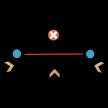
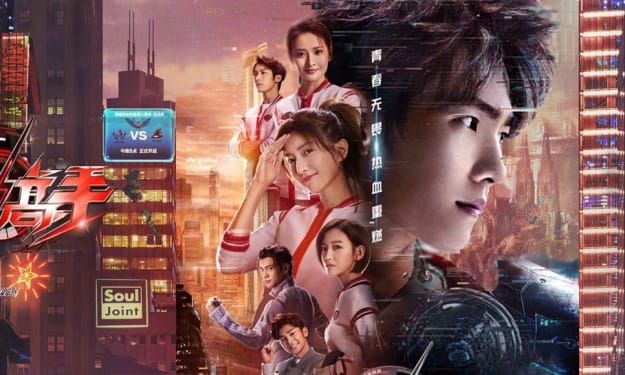



Comments
There are no comments for this story
Be the first to respond and start the conversation.